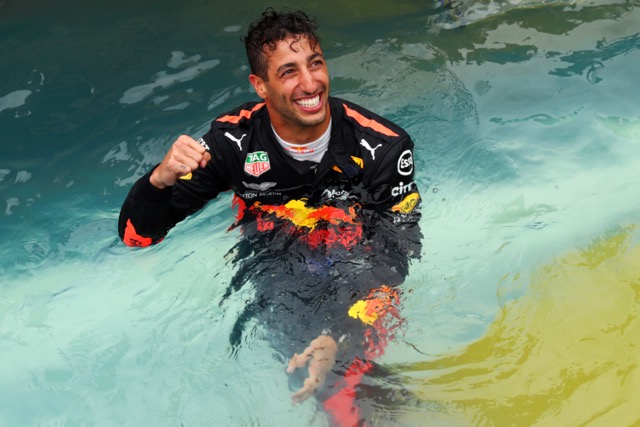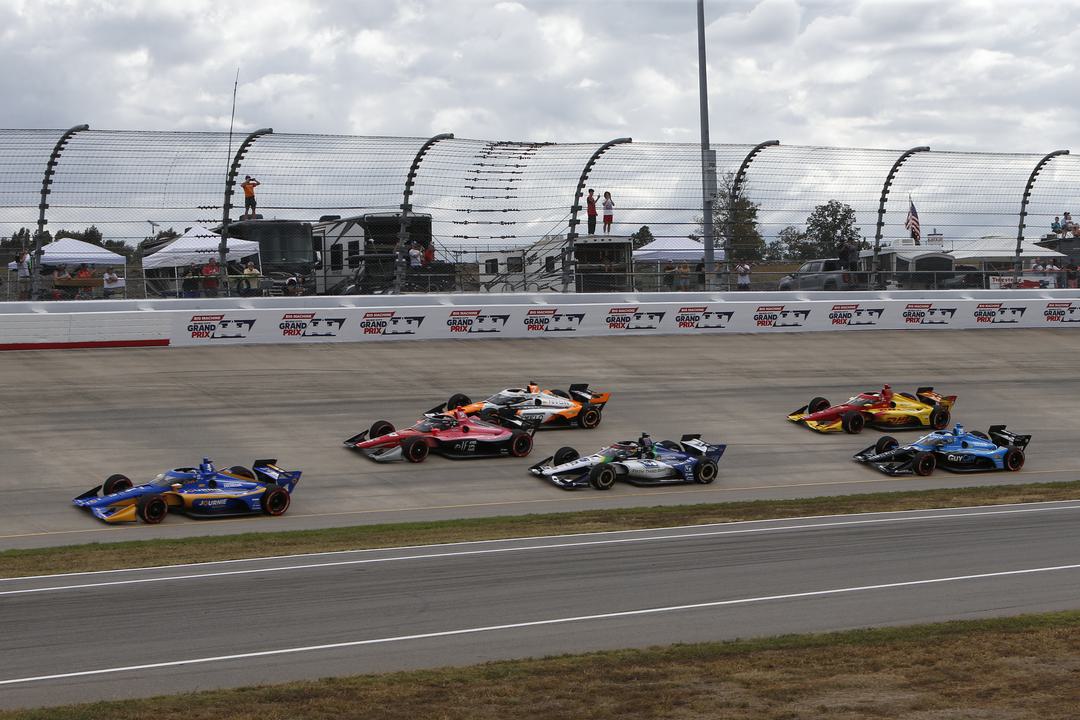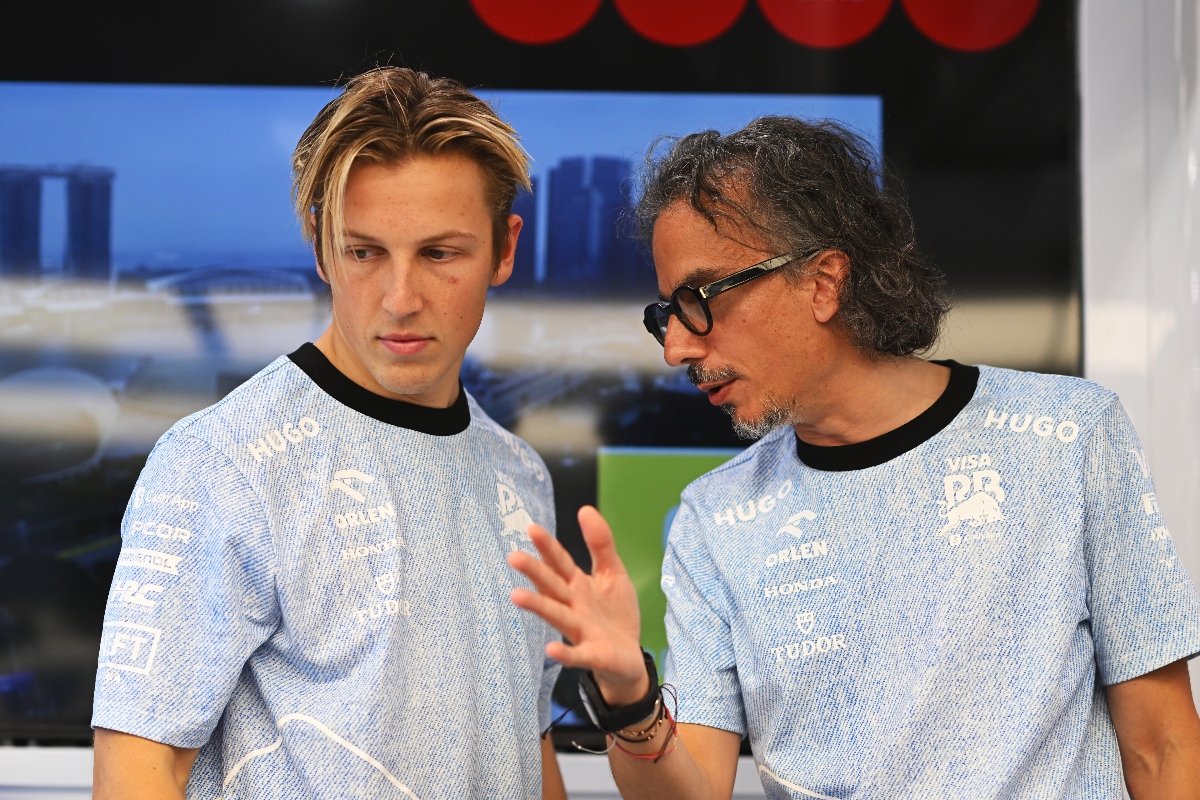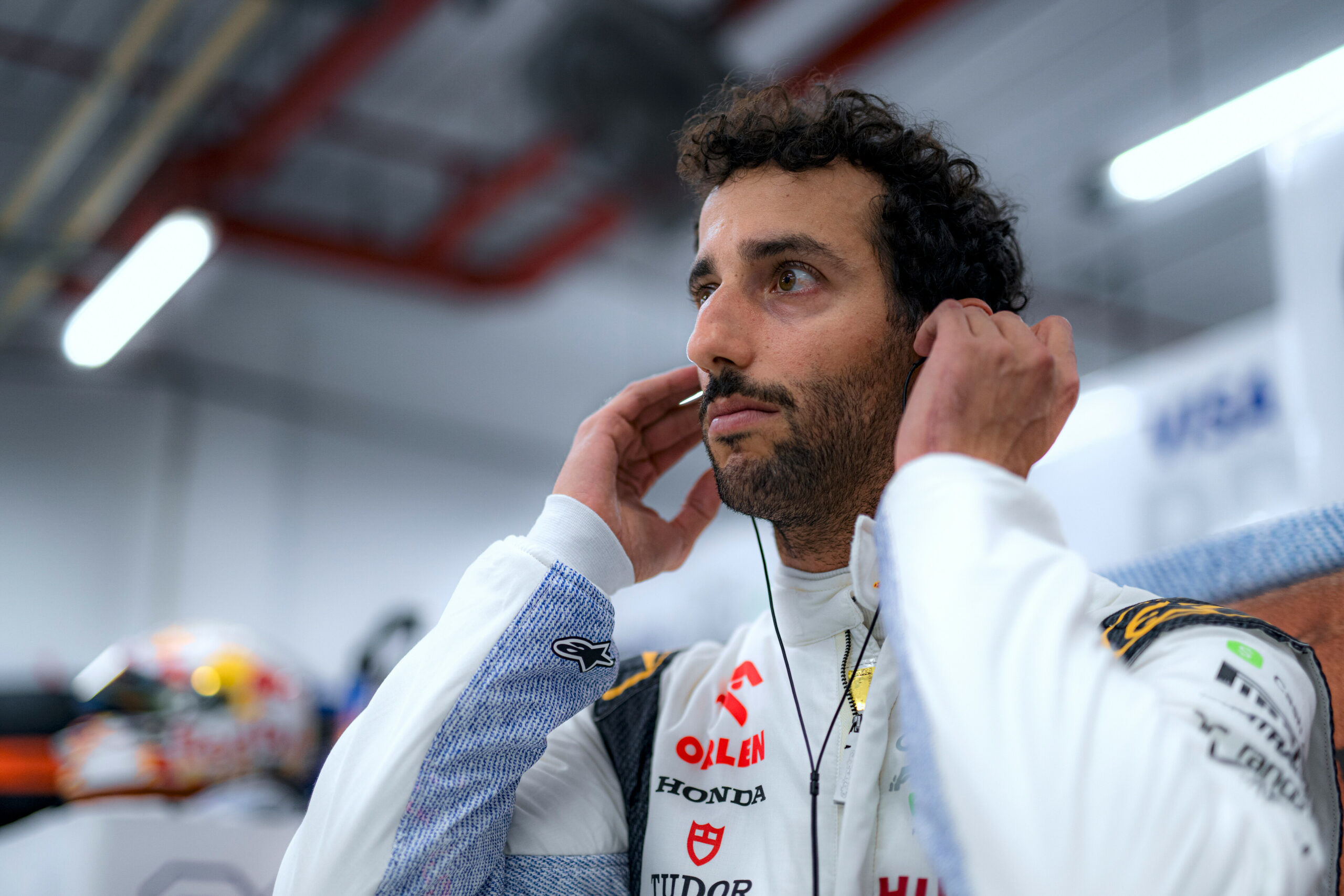A podium seemed to be on the cards for Mercedes at the Singapore Grand Prix after they managed to lock out the second row on the grid in an interrupted qualifying session. However, certain missteps on the part of the pit wall in terms of splitting strategies and subpar race pace compromised their performance massively. While George Russell managed to hold off Charles Leclerc’s charging Ferrari in the closing stages of the race and come home fourth, Lewis Hamilton took the chequered flag in sixth place.
On the Akkodis Race Debrief, Technical Director James Allison was asked to offer his opinion on the contribution of simulator drivers like Frederik Vesti to the step forward in performance they took during the weekend. Stating that the premise was somewhat flawed, the 56-year-old clarified that their struggles on the first day of practice were indicative of the challenges the Silver Arrows anticipated facing on Sunday.
Despite calling their turnaround on Saturday an anomaly, Allison expressed his gratitude to the rest of the team and attributed their excellent starting positions and moderate haul of points on Sunday to their hard work. Additionally, he commented that they might’ve unintentionally compromised their race pace by drastically improving their one-lap performance.
“I’m going to have to question the premise of that a little bit because I think Sunday’s result was pretty difficult for the team and Friday was signalling some of maybe what we might’ve, you know, expected by way of difficulty.
“The anomaly really was Saturday where we managed to get from a difficult Friday to a pretty creditable grid position. And there, we have to give great credit to the team back at the factory who really did help turn around a difficult Friday, put us much further up the grid than Friday might have suggested and, you know, give us a result that, while disappointing, was not disastrous as a consequence.
“I would say that probably the trade we made, although unwittingly, was that we improved the car for a single lap for qualifying, but it was quite a painful thing then on long runs.”
On the topic of the soft tyres that Hamilton started his race on and whether they could’ve extended the first stint, Allison admitted that their choice of the tyre compound was a mistake. With hindsight, he elaborated that they should’ve followed the other drivers around Hamilton when it came to strategy and bolted on a set of mediums.
Adding that they expected the soft rubber to give the seven-time world champion a good launch at the start and allow him to gain a position or two, Allison confessed that they didn’t anticipate the challenges that the soft tyres posed on Sunday.
“Before I give the explanation, I’ll just start off by saying we shouldn’t have started on the softs. That was a mistake. If we could turn back time, we would do what those around us did and select the mediums.
“The reasoning was that the soft tyre very often allows you to get away from the start abruptly and allows you a good chance of jumping a place or two in the opening laps of the race. And we had no real expectation before the race that we were going to suffer the sort of difficulties that we then experienced on the soft rubber. So, we imagined we would get the upside of the soft rubber, of getting a place or two.”
Although Hamilton failed to gain position(s) off the line, Allison stated that the Mercedes pit wall still expected the nature of the race at the Marina Bay Circuit to counter the drawbacks of the soft compound. However, unlike previous years in Singapore where drivers gradually built up their pace and enabled teams to extend their stints on the soft tyres, the Brit remarked that the lap times started speeding up as early as lap 5, which expedited tyre degradation and forced Hamilton to pit early.
“We didn’t, because that just isn’t the way the starts played out. And then we hoped that the downside of the softs being a bit more fragile wouldn’t really play out particularly badly because on the whole, if you look back over the years in Singapore, on the whole the pace starts very, very easy at a Singapore race and the drivers then build up the pace over many, many laps, leaving a soft tyre perfectly okay to run relatively deep into the pit window.
“So, we didn’t get the places at the start. The pace started building up for around about lap five and that left Lewis with a car that was not particularly happy anyway, suffering from quite poor tyre degradation and needing to come in early as a consequence and really ruined his race for him. Yeah, so just a clear mistake.”
In terms of the new set of medium tyres that Hamilton had and whether it was considered a potentially beneficial option in the case of a well-timed Safety Car, Allison responded in agreement. He revealed that the availability of the mediums made them consider switching to a two-stop strategy several times during the race after committing to the S-H strategy early on.
While fresher rubber would’ve allowed Hamilton to make up some ground, Allison explained that they decided against opting for a two-stopper because of the overwhelming loss of time resulting from a second pit stop. He added that the pit wall couldn’t find a way to capitalise on that set of mediums given the uninterrupted race that Singapore witnessed for the first time in a long while.
“It was considered. It was certainly there as a great weapon had there been a safety car at an opportune moment in the race. That would’ve been one of the upsides of that strategy. But once embarked upon the Soft-Hard strategy, we were considering changing to a two-stop for Lewis at various points during the race.
“But, although that would’ve put him out on fresher rubber and he would’ve been swift on that fresher rubber, all our calculations suggested that he wouldn’t actually have gained back the pit stop loss. So, it was there in the hutch, could’ve used it, would’ve been good at a Safety Car, but in a normal uninterrupted race, which for the first time in forever we got in Singapore, that tyre was not a thing that would have helped Lewis’s weekend.”
With regard to the question of how Russell managed to keep Leclerc behind, Allison commended the two-time race winner for managing his tyres well and keeping them alive in the closing stages of the race. Additionally, he applauded their High Performance Powertrains team for nailing the switch settings that allowed Russell to efficiently employ their power unit and stay ahead of the Ferrari.
Although the massive tyre delta enabled Leclerc to overtake Hamilton for P5, Allison estimated that his tyre advantage was no longer significant by the time he found himself on the gearbox of Russell. Admitting that it was a massive relief for the Brackley-based team to hold onto the fourth position, Allison complimented the 26-year-old for keeping it clean under pressure and enduring the sweltering temperatures of the W15 cockpit.
“Well, first of all, I think great credit to George [Russell] for preserving a bit of life in the tyre towards the end of the race. Big up also to the guys at HPP who got all the switch settings dead right so that we had as much as the power unit was able to give for those very tense closing laps.
“And I think too that Leclerc had had to take a lot out of his tyres getting to George [Russell]. So we saw some very, very fast laps from Charles [Leclerc] earlier and that had allowed him to arrive up behind George with a few laps to have a go at him before the chequered flag. But by the time he did get there, he’d taken the edge off his tyres. There wasn’t quite as much for him to, sort of, lean on when it came to getting by George [Russell].
“And then George [Russell] drove very, very neat and tidily and just managed to stay ahead, which was a great relief to us and a good effort to George [Russell], who was by that stage feeling a bit second best with the heat in the car and at the end of a long race.”
When asked to address the post-race sentiments of the drivers, Allison acknowledged that it was a frustrating weekend for the entire team. Emphasising their long-standing concerns about the poor performance of the soft compound on tracks where overheating is likely, he remarked that the Marina Bay Circuit aggravated their troubles.
Furthermore, the Brit remarked that while the drivers recovered from the heat exhaustion issues fairly quickly, it was difficult to shake off their frustrations regarding the car performance on Sunday.
“Well, I think like the rest of us, they’re feeling fed up that the car was not particularly competitive in race trim. It was okay in quali, but not in race trim. We suffered again from a thing that has been problematic for us, which is on softer rubber at tracks where tyre temperature is at a premium, where it’s very to overheat, we lose relative competitiveness.
“And Singapore is at the extreme end of that experience and it was quite a difficult thing for them to manage. And to add insult to injury, 30 degrees air temperature, 70% relative humidity. It was very, very, very hot in the car. And at the end of the race, both of them were feeling that.
“They feel a lot better now from the heat part of it, you know, cold ice bath and a few drinks, and they bounce back relatively swiftly. But the more significant thing, which is caring about the pace of the car, that hurt lingers a little longer.”
Regarding the break between Singapore and Austin and what they have in the pipeline in terms of development, Allison responded that the team would focus on alleviating the tyre issues that compromised their race day after a promising qualifying session. Moreover, he disclosed that the team is working diligently to bring their final upgrades of the season and that they are hopeful about their performance when the W15 hits the track in Austin.
“Well, we’ll be trying to figure out how to mitigate what ailed us this weekend, how to figure out how to make the tyres run better on these sort of overheating circuits. And we’ll be also doing quite a lot of work to bring our last upgrade of the season together.
“We’ve got a fairly substantial set of new clothes for the car coming for Austin that we hope will give us a decent weekend there. So we’ve got to deliver all that and get ourselves ready for these last few races of the year.”





